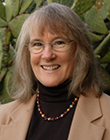Cross-Cultural Trans-Pacific Team Teaching in Theological Education
How I Got into Cross-Cultural Teaching
This adventure started at a table in a small cubby hole of a traditional Korean restaurant in the maze of streets around Insadong Market in Seoul. A former student introduced me to a friend of his, a history professor at Hanshin Graduate Theological Seminary. The three of us were eating delicious food and talking in two languages, and my friend and former student Pastor Lee was translating a lot of it. Professor Yeon and I did not speak much of each other’s languages, but it soon became clear that we shared many thoughts about the problem of how to frame the history of Christianity narrative so that students from the Pacific world would recognize themselves in it. How do we make the long story of Christianity in this region more than a short section of a final chapter on global Christianity or simply a venue for mission history? Could we teach a course together sometime? Professor Yeon had a sabbatical coming up in a couple of years. He could come to Berkeley. Then two years later, I would come to Seoul. We would teach the same course in both places, bilingually, and see what came out of the experience.
I had already done some cross-cultural teaching with a group of colleagues who offered a seminar in the history of religion in the American West together at the Graduate Theological Union. Over the course of seven years, our team included Anglo-American Christians and Jews, Asians, Latinos, Choctaw Nation, and Asian Americans. Though all of us came from the American academic world and taught the course in English, we had to negotiate subtle differences in our approach to teaching, relating to students, and conceptions of the subject matter. I have also taught courses on the US-Mexico border with Rev. Dr. Carlos Correa, where we negotiated cultural differences between our own styles of teaching as well as between those cultures of the American academy and the Mexican and American social service agencies and organizations with which we have worked in partnership. I had also participated in an ATS-sponsored workshop, “Teaching Across Borders,” with a group of colleagues and spent a year thinking about cross-cultural teaching.
Korean/US Cross-Cultural Bilingual Courses
The course I taught with Professor Yeon was more complex because it not only crossed cultural borders, but we had to work in two languages. Our course design featured a seminar style in which the students’ research projects formed an important part of the content. The objective was for the students to be able to create a historical narrative of some aspect of Christianity in the Pacific world, either for the purpose of teaching a seminary or university class or for the purpose of teaching in a church setting. We taught in both Korean and English, and students could work in either language. Both schools provided a teaching assistant/translator to help us communicate across language barriers. It was important that we taught the course in both of our settings. American and Korean educational cultures are different in a number of ways, and both of us gained insight into the other’s academic culture. Professor Yeon revised our notes and published them through the Hanshin University Press as History as a Mirror (2011).
Much of what went on in the class was storytelling and critical engagement with those stories. Bronwyn Williams discusses the effort to get students critically engaged with each other’s thinking across cultural lines. He points out the dilemma for teachers who believe they are responsible for molding students into good academicians on the one hand, and on the other hand want to hone student’s ability to think critically and independently (Williams 2003). We both came to know the students deeply, and the course ended up teaching all of us about the complexities of what historians think we know. The political nature of narratives troubled many of the students who were used to thinking of the history of Christianity as a religious narrative affirming the faith journey of their particular denomination.
Teaching the course in Korea, the political nature of the narratives became strongly evident. There, the narratives of Christianity are often bound up with national politics and national histories, particularly in the Japanese colonial period when Protestant Christianity was in its formative stages in Korea. Whereas in the United States political critiques of what the students regarded as religious narratives troubled the students, in Korea the students resisted theological critiques of what they strongly believed about politics.
Multicultural Course with Cross-Cultural Teaching Team (Samoan/US)
Last summer, I was part of yet another trans-Pacific team teaching experiment. Professor Tafa Muasau from Kanana Fou Theological Seminary in American Samoa came to Berkeley and he and I taught a course together on the history of Christianity in the Pacific world. Our students were from all over the Pacific world. More than half were non-native English speakers. The classroom language was English, but again we slowed the pace of the course down to accommodate those for whom English was difficult. Our method was “talking story,” with a critical engagement with those stories. We gave only two lectures during the course. The number of cultures represented in this class was greater, and some students' countries were, and continue to be, in political tension with each other. Essentially we put the readings into dialogue with the students' own stories.
What We Gained from this Approach
In all of these courses, we found several resonances among the stories of Christianity in the Pacific world and certain aspects of shared spiritual concern:
- the experience of voyaging (physical, intellectual, spiritual)
- the value of family
- the tensions between love and fear
- the formative experience of nature—volcanoes, earthquakes, typhoons, tsunamis, fishing
- the experience of Christianity as a minority religion, or as a majority religion in a pluralistic society
The pedagogical method of "talking story" gave the students the ability to frame narratives that incorporated their experience, but also critically engaged readings and other narratives.
What Difficulties to Expect
From these experiences, I would say the main difficulties we had to overcome included the expense of bringing a colleague across the Pacific for a long time to teach the course, the language barriers, and the unspoken cultural influences of pedagogical style. Doing this kind of teaching takes considerable commitment on the part of the schools where we taught. It also takes considerable commitment of the faculty members to each other—the patience to communicate using unfamiliar languages, the discipline of asking questions about assumptions, and the commitment to expend the energy it takes to do this kind of intense work. I would suggest the following recommendations for anyone undertaking to do this kind of teaching:
- Make sure to secure the support of your school ahead of time. Hospitality is important, both for the teaching partner(s) and for the students.
- Be realistic about language resources. I found it was easy to be optimistic about my own Korean abilities. Ask for help early.
- Pay attention to differences in teacher and student assumptions about each other in varying academic cultures.
- Spend plenty of time ahead of the opening of the course in planning together. Members of the team will be assuming things the other does not expect.
- Make time to work with surprises.
 Randi Jones Walker is professor of church history at Pacific School of Religion, Berkeley, CA, and serves on the core doctoral faculty of the Graduate Theological Union. Her publications include Protestantism in the Sangre de Cristos (University of New Mexico Press, 1991); Emma Newman: A Frontier Woman Minister (Syracuse University Press, 2001); The Evolution of a UCC Style: Essays in the History and Ecclesiology of the United Church of Christ (United Church Press, 2005); and Religion and the Public Conscience: Ecumenical Civil Rights Work in Seattle 1940–1960 (John Hunt Limited, 2012). Her current research focuses on the history of Christianity in the Pacific world, growing out of her experiences of trans-Pacific teaching.
Randi Jones Walker is professor of church history at Pacific School of Religion, Berkeley, CA, and serves on the core doctoral faculty of the Graduate Theological Union. Her publications include Protestantism in the Sangre de Cristos (University of New Mexico Press, 1991); Emma Newman: A Frontier Woman Minister (Syracuse University Press, 2001); The Evolution of a UCC Style: Essays in the History and Ecclesiology of the United Church of Christ (United Church Press, 2005); and Religion and the Public Conscience: Ecumenical Civil Rights Work in Seattle 1940–1960 (John Hunt Limited, 2012). Her current research focuses on the history of Christianity in the Pacific world, growing out of her experiences of trans-Pacific teaching.



